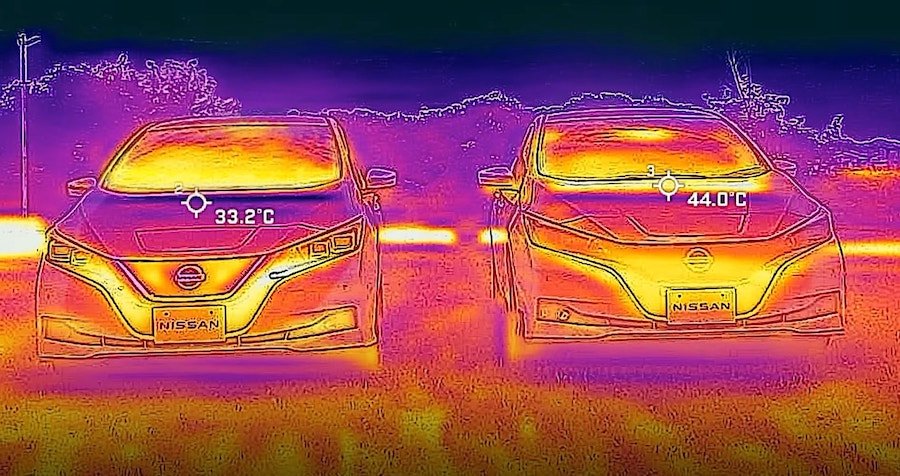Nissan Working on Paint That Fights Off Sunlight and Heat with Electromagnetic Waves

There are ways, of course, to prevent the interior of a vehicle from heating up to extreme levels. The most common are parking the car in the shade or using an underground parking or garage, but that's not always possible. So a better way, perhaps one that could prevent cars from heating up no matter the ambient temperature, is needed. And the Japanese from Nissan believe they might just have found such a better way.
We're not talking about some fancy, high-tech gizmo, but about the good-old paint. Not just any paint, but one that could help "lower a vehicle's ambient cabin temperature in summer and reduce the energy usage of the air-conditioning system." And at the core of it all sits a process called radiative cooling.
In a nutshell, radiative cooling is a body's ability to lose heat as thermal radiation, cooling itself in doing so. It is a process already used with various degrees of success in several applications, including ice-making and spacecraft heat shields.
When applied to paint, radiative cooling will, thus, have the same effect. We know this already, as such paints are used here and there on buildings, helping them stay cool.
The Japanese carmaker worked with radiative cooling products specialist Radi-Cool to develop a car paint with similar capabilities. The end product is made of undisclosed synthetic composite materials (so-called metamaterials) that come with properties that are not usually found it nature.
The main elements of the paint are a pair of microstructure particles that have a habit of reacting to light. One of them reflects near-infrared rays, the ones that trigger traditional paint to produce heat through molecular-level vibrations, while the other, well, this one creates electromagnetic waves.
That's right, the particle generates electromagnetic waves that redirect the heat energy away from the vehicle and back into the atmosphere, thus eliminating its effect on the car.
The Nissan paint project has been in the works since 2021, and in November last year it became real in the form of a feasibility trial conducted at the Haneda airport in Tokyo. There, the paint was applied to the body of a Nissan NV100 used by the All Nippon Airways (ANA) airport service.
As you all know, airports, especially their runways, are completely without shade, so fitting an innovative thermal paint on a vehicle operating there makes perfect sense. And the results so far, says Nissan, are pretty impressive, both here and in the case of the other research conducted on the paint.
In a separate experiment, for instance, Nissan parked two vehicles directly in the Sun. One of them was draped in regular car paint, while the other had the special hue on.
We're not told for how long the two cars have been left to bake (by the looks of it we're talking about an extended period of time), but Nissan says that at the end of the trial the differences were huge.
The car wearing the radiative cooling paint had an exterior surface temperature that was 12 degrees Celsius (53 degrees Fahrenheit) lower than the control vehicle. As a result of that, the interior of the car was five degrees Celsius (41 degrees Fahrenheit) cooler.
The difference is owed to the fact that the combined power of the two paint particles I mentioned earlier is more than enough to reduce heat transfer in the roof, hood, doors, and body panels.
At the time of writing Nissan is still a long way from making the new paint commonplace on cars. That's because there are issues with the paint's thickness (it is usually applied in thick layers on other structures, but that won't work on cars), the means of applying it (a roller is used for buildings), and the topcoat.
The carmaker says it pretty much solved the topcoat and roller problems, but it still works of solving the thickness issue. The reasearch team behind the project, led by Dr. Susumu Miura, says it brought thickness down to 120 microns, but that's still six times more than in your regular car paint.
On the upside, Nissan says it has evidence the paint can resist salt, chipping, peeling, scratches, and chemical reactions. It can be repaired, if damaged, and has the potential of allowing a variety of colors.
Keeping a car cooler will not only make it easier for people to get inside during a hot summer day, but will also mean there is less need for air conditioning, and that in turn leads to energy and fuel savings.
With that in mind, Nissan sees potential applications for the finding first and foremost on the cars that spend a lot of time of the road, meaning mainly vans and trucks.
Related News
